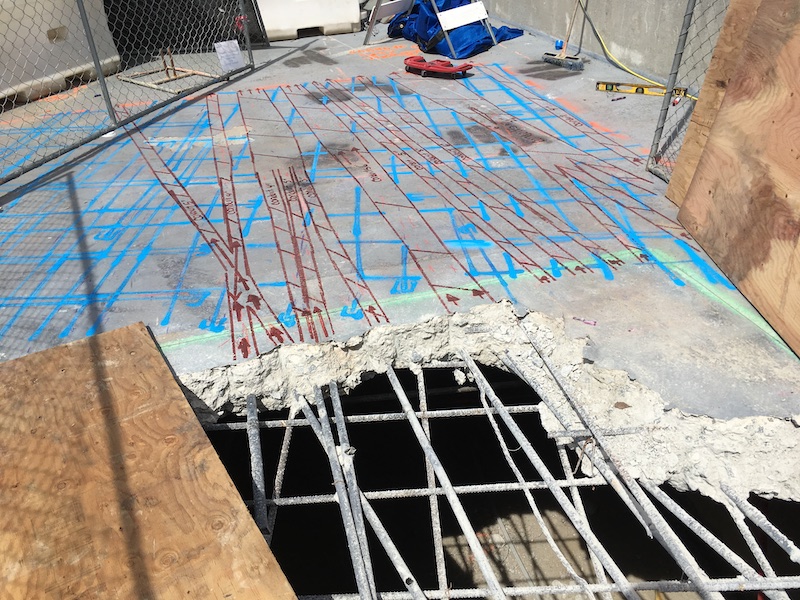Harness the Strategic Side of Concrete Scanning for Unparalleled Task Success and Quality Control
In the realm of modern building and construction and framework advancement, the usage of concrete scanning innovation has emerged as a critical tool for guaranteeing project success and preserving top quality standards. The real power of concrete scanning lies not only in its capacity to improve task end results however likewise in its ability to transform traditional techniques, establishing a brand-new benchmark for precision and effectiveness in the construction market.
The Importance of Concrete Scanning
Concrete scanning is an important action in construction jobs to make certain the safety and stability of structures. By utilizing different scanning innovations such as Ground Passing Through Radar (GPR) and electro-magnetic induction, building and construction teams can non-destructively examine the subsurface of concrete frameworks to determine possible hazards like rebar, channels, or post-tension cords. This details is crucial for project specialists, managers, and designers to make enlightened choices and stay clear of costly errors during the building and construction process.
Among the main reasons why concrete scanning is so vital is its capacity to stop accidents and injuries on the building site. Unintentionally puncturing a real-time electrical conduit or destructive post-tension cords can have devastating consequences, not just in regards to security but likewise in regards to job hold-ups and monetary ramifications. By performing extensive concrete scanning before any kind of drilling, reducing, or coring tasks, construction groups can alleviate risks and develop a safer working setting for everyone entailed.
In addition to safety and security considerations, concrete scanning additionally plays a crucial role in making sure the long-term resilience and top quality of the structure. By identifying any type of abnormalities or flaws hidden below the surface, such as spaces or delamination, early treatment can be executed to resolve these problems before they intensify right into more substantial problems. Inevitably, investing in concrete scanning is an aggressive step that can conserve time, money, and resources in the long run, while additionally maintaining the highest standards of building and construction excellence.
Advanced Modern Technology for Exact Results

In addition, 3D scanning innovations use a detailed sight of the subsurface environment by developing thorough electronic designs. These designs give valuable insights into the structural stability of concrete aspects and assist in determining potential weaknesses before they intensify into significant concerns. By incorporating these innovative innovations into concrete scanning practices, building teams can improve workflows, lower task hold-ups, and make certain the overall quality and success of the project. The accuracy and effectiveness provided by these tools add dramatically to the job's success by assisting in notified developing and decision-making quality control actions.
Enhancing Project Performance and Timelines

In addition, concrete scanning allows teams to recognize architectural weaknesses and prospective dangers beforehand, permitting for timely remediation and avoiding mishaps that might hinder job timelines. read the article The real-time data offered by scanning devices helps with notified decision-making, bring about smoother coordination among various professions and stakeholders. This improved collaboration lessens problems, boosts efficiency, and ultimately increases job shipment.
In addition, by proactively addressing concerns via concrete scanning, construction groups can abide by routines better, minimize downtime, and enhance resource allotment. The ability to discover concealed challenges and verify structural honesty successfully adds to overall task performance and timelines, making certain effective results and client fulfillment.
Ensuring Security and Risk Reduction

Risk mitigation methods can be boosted through the detailed information provided by concrete scanning, making it possible for job teams to make enlightened decisions that lower the likelihood of unforeseen occurrences. Additionally, by precisely drawing up subsurface conditions, specialists can stay clear of expensive rework, hold-ups, and damages to existing structures, additionally contributing to overall task safety and success. Applying concrete scanning as a regular practice not just makes sure a more secure work setting but additionally instills confidence in stakeholders concerning the task's commitment to high quality and threat monitoring.
High Quality Guarantee Via Concrete Scanning
Concrete scanning plays a critical function in upholding quality control standards within building tasks. By utilizing advanced scanning modern technologies such as Ground Penetrating Radar (GPR) and Concrete X-ray, project supervisors and engineers can make sure the honesty and high quality of concrete structures. Through concrete scanning, prospective issues, such as spaces, splits, or reinforcing bar congestion, can be identified non-destructively, permitting timely interventions to maintain the structural stability of the task.
Quality control via concrete scanning not only helps in determining existing concerns yet also allows aggressive measures to avoid future troubles that could endanger the safety and long life of the framework. By conducting detailed scans at vital phases of Get More Information building, teams can validate the precision of architectural plans, confirm the placement of critical aspects, and address any deviations without delay. This proactive technique lessens rework, decreases costly hold-ups, and inevitably results in the delivery of high-grade, resilient frameworks that satisfy or exceed industry requirements.
Conclusion
In final thought, concrete scanning plays a crucial role in guaranteeing job success, security, high quality, and performance assurance. The tactical edge offered by concrete scanning allows for proactive threat mitigation and boosts total task administration.
In the realm of modern-day construction and facilities growth, the use of concrete scanning modern technology has emerged as a pivotal device for making sure job success and keeping high quality requirements. By incorporating these innovative modern technologies into concrete scanning practices, construction teams can streamline process, decrease task hold-ups, and guarantee the overall quality and success of the project.Offered the necessary nature of task performance and timelines in construction monitoring, the focus currently shifts towards making certain safety and mitigating threats within the job setting.Concrete scanning plays an essential duty in supporting top quality guarantee standards within building tasks. By making use of sophisticated scanning innovations such as Ground Permeating Radar (GPR) and Concrete X-ray, project supervisors and engineers can make sure the stability and top quality of concrete frameworks.